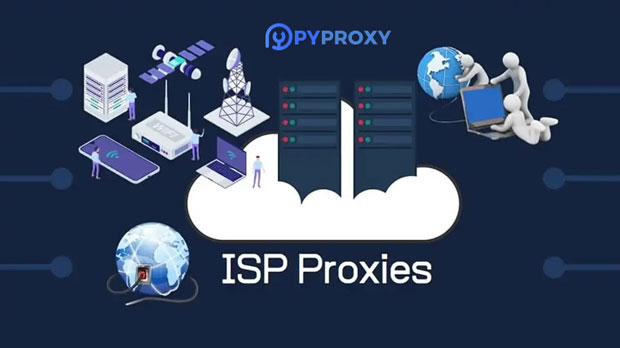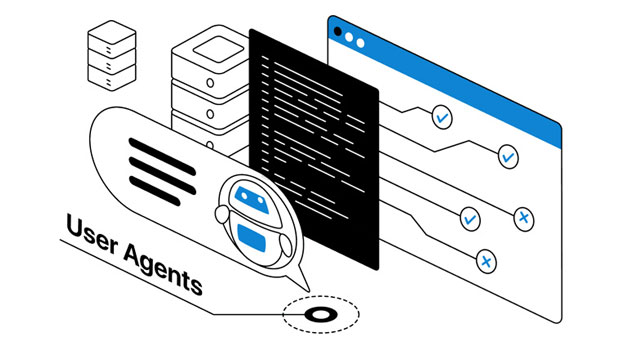Misconceptions about the Socks5 proxy, have you hit these “mines”?
socks5 proxies are often hailed as one of the most versatile tools in the world of online privacy and security. However, despite their popularity, many users fall victim to common misconceptions about how SOCKS5 works, what it can and cannot do, and how secure it really is. These misunderstandings can lead to ineffective use of SOCKS5 proxies or even expose users to risks they were trying to avoid. In this article, we will address some of the most common myths about SOCKS5 proxies, helping you avoid these "traps" and use them more effectively. Understanding the true capabilities and limitations of SOCKS5 proxies is crucial for anyone who relies on them for internet privacy, bypassing restrictions, or enhancing security. Understanding SOCKS5 Proxies: The BasicsBefore delving into the common misconceptions, it’s essential to understand what SOCKS5 proxies are and how they work. SOCKS (Socket Secure) is a protocol that facilitates the routing of network packets between a client and a server through a proxy server. SOCKS5 is the latest version, offering several improvements over previous versions, including enhanced support for IPv6 and greater flexibility in handling authentication.Unlike traditional proxies, SOCKS5 operates at a lower level, handling not only web traffic but also other types of traffic, such as torrents, gaming, and email. This makes it more versatile than HTTP or HTTPS proxies. However, just because SOCKS5 can be used for a wide range of applications, it doesn’t mean it’s foolproof. Users must be aware of its potential limitations and shortcomings.Myth 1: SOCKS5 Guarantees Complete AnonymityOne of the most pervasive myths about SOCKS5 proxies is that they guarantee complete anonymity online. While SOCKS5 can indeed mask your IP address and help you bypass geo-restrictions, it does not provide complete anonymity. SOCKS5 proxies do not encrypt your traffic. This means that while your IP address might be hidden, your data is still vulnerable to surveillance by anyone who can access your unencrypted traffic, such as ISPs, hackers, or other third parties.For true anonymity, you need to consider using a VPN service or another form of encryption. While SOCKS5 proxies can hide your IP address, they don't protect your data in transit, which makes them less secure for activities like online banking or sharing sensitive information.Myth 2: SOCKS5 is Just for Browsing the WebAnother common misconception is that SOCKS5 proxies are only useful for web browsing. In reality, SOCKS5 is a versatile protocol that can be used for a wide variety of internet traffic. This includes not only HTTP/S web traffic but also P2P file sharing, online gaming, email protocols (like POP3 and SMTP), and even VoIP (Voice over Internet Protocol) calls.This flexibility makes SOCKS5 a powerful tool for users who need to route multiple types of traffic through a proxy. For example, torrent users frequently use SOCKS5 proxies to route peer-to-peer traffic anonymously. However, because SOCKS5 does not encrypt traffic, users should still be cautious when using it for sensitive activities.Myth 3: SOCKS5 Can Fully Bypass All Geo-RestrictionsMany users believe that SOCKS5 proxies can bypass all geo-restrictions and censorship without exception. While SOCKS5 can help access region-locked content or bypass government censorship, it's not a guaranteed solution for all scenarios. Some websites and services employ advanced methods to detect proxy traffic, such as fingerprinting, behavior analysis, and IP blacklisting.In some cases, a socks5 proxy might be detected and blocked, preventing access to restricted content. Moreover, some streaming services actively block traffic from known proxy servers, making it difficult to stream content even with a SOCKS5 proxy. To get around these types of restrictions, users may need to consider more advanced methods, such as VPNs or specialized proxy services designed to handle these challenges.Myth 4: SOCKS5 Proxies Are Always SecureAnother misconception is that SOCKS5 proxies are inherently secure. While SOCKS5 can provide a layer of privacy by hiding your IP address, they are not necessarily secure on their own. SOCKS5 proxies do not offer encryption by default, which means that any data sent through the proxy can be intercepted, read, or altered by third parties.To improve security when using a SOCKS5 proxy, you may want to combine it with encryption protocols like HTTPS or use it in conjunction with a VPN that encrypts your traffic. Additionally, the security of the SOCKS5 proxy itself depends on the provider. If you're using a free or unreliable proxy, there is a risk that the provider could log your data, sell it, or even inject malicious content into your traffic. Always ensure that you trust your SOCKS5 proxy provider and take additional steps to secure your traffic.Myth 5: SOCKS5 Proxies Are Easy to Set UpMany users assume that setting up a SOCKS5 proxy is quick and easy. While setting up a basic SOCKS5 connection can be simple, it’s important to understand the various configurations that might be required for different applications. Depending on what you want to use the proxy for—whether it’s web browsing, torrenting, or gaming—you may need to configure specific software to route traffic through the SOCKS5 proxy.Additionally, some applications require you to manually enter the SOCKS5 server’s IP address and port number, and you may also need to authenticate the connection. For users who are unfamiliar with networking or proxy configurations, the setup process can be intimidating. Fortunately, there are plenty of online guides and resources that can help users get started, but it's important not to assume that the process is as simple as flipping a switch.Myth 6: All SOCKS5 Proxies Offer the Same PerformancePerformance is another area where users can fall into misconceptions. Not all SOCKS5 proxies offer the same performance, and the speed, stability, and reliability of a SOCKS5 connection can vary significantly depending on the provider, the server’s location, and the load on the network. Free SOCKS5 proxies, for instance, tend to be much slower and less reliable than paid services, which may also have higher chances of being blocked by websites or streaming services.It's crucial to test the SOCKS5 proxy and assess its performance before relying on it for critical tasks. This can include checking the connection speed, latency, and the proxy server’s ability to handle the type of traffic you intend to route through it.Conclusion: Use SOCKS5 WiselySOCKS5 proxies are powerful tools for enhancing online privacy, bypassing restrictions, and routing various types of internet traffic. However, it’s essential to avoid common misconceptions that can lead to ineffective use or security risks. SOCKS5 does not guarantee complete anonymity, and it is not always the best solution for bypassing geo-restrictions or ensuring security. By understanding the true capabilities and limitations of SOCKS5, you can make informed decisions about when and how to use it.To maximize the benefits of a SOCKS5 proxy, you should combine it with other security measures, such as encryption and VPNs, and carefully select trustworthy providers. By doing so, you can use SOCKS5 effectively while minimizing the risks associated with online privacy and security.
2024-12-30

























































